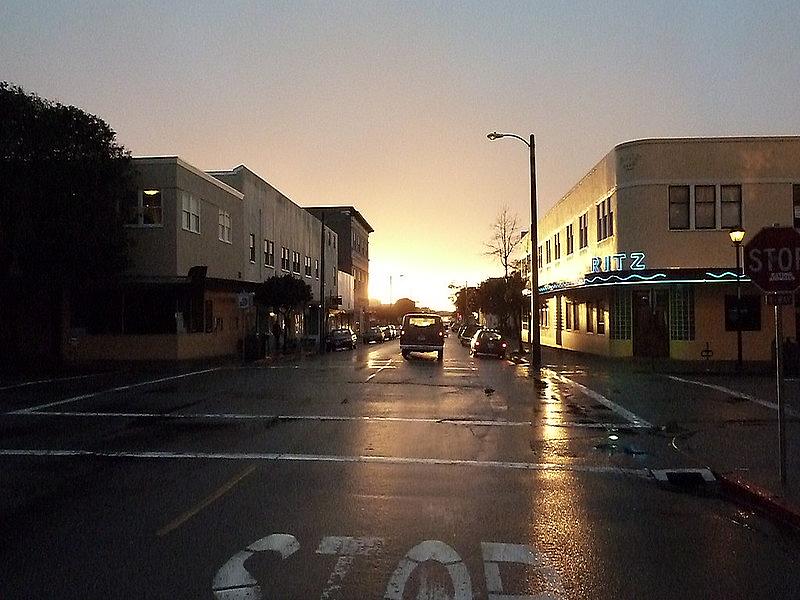Mendocino County and rural health care disparities: Looking back to move forward

Flickr Bob Doran
As COVID-19 spread many presumed the pandemic would be worse in high-density urban areas. People along California’s North Coast assumed that our diffuse population would protect us, with tourism the only threat. Those hopes were quickly quashed, as case rates proved substantially higher than anticipated.
Latino and Indigenous peoples in Mendocino County have long faced inequities in health care access, and our project for the 2021 California Fellowship will investigate these disparities in the quality and access to health care by sharing the stories of community members in more underserved communities through a series of explanatory series seeking to identify potential solutions.
Whether long-standing systemic issues such as poverty, racial oppression, limited health care infrastructure or prevalence of chronic health conditions, the pandemic laid bare enduring disparities. We’ll ask why and explore how. What have been the consequences and distinct challenges for these populations, with an emphasis on the vaccine rollout? What changes in rural health care have been made that could be applied post-pandemic?
Our main coverage area, Mendocino County, is on the periphery of the more populous and wealthy Bay Area counties, and with a vast, rural, mountainous geography that isolates communities from dwindling rural health care resources. For example, labor and delivery services at Mendocino Coast District Hospital were closed in April 2020, forcing some mothers-to-be to give birth at home or embark on an hours-long drive on windy mountain roads to the nearest birthing center in Ukiah. The North Coast counties have some of the state’s highest rates of poverty, homelessness, domestic and child abuse, and opioid abuse in the state. For our communities, inequities, especially related to health care access, have only been exacerbated by the pandemic.
Mendocino County faces similar challenges to other North Coast communities, but has also seen higher COVID-19 case rates. The county was downgraded to a moderate risk level only recently this spring. Despite significant disparities in COVID-19 infections, Mendocino County officials did not provided any demographic data on vaccine distribution beyond raw numbers of doses administered for the first several months of the vaccine rollout as infections stayed high, making any assessment of equity very difficult.
There is a critical need to address the broader issue of how geography affects the distribution of health-related resources for communities on the North Coast. We plan to do this, in part, by honing in on health and health care disparities among Native people on tribal lands, often living in remote, isolated areas with widely varying access to health resources. One of the earliest notable outbreaks in Mendocino County was on the Round Valley Indian Tribes reservation, prompting local officials to ask the California National Guard to step in with medical support, which never materialized. We examine why certain tribes managed to keep COVID-19 cases down while others continued to see rising case numbers, and how certain tribal health centers were more proactively successful in addressing the pandemic than some county governments.
We also look at health equity for more historically underserved, marginalized, and vulnerable communities, including more remote rural residents, particularly low-income, elderly, and those without transportation, Indigenous, Latino, and immigrant communities. What ongoing structural inequalities in health care, such as accessing mental health services, have been highlighted by the pandemic, and how are health officials and local leaders from these disproportionately affected populations building trust and sharing information to address urgent needs?
The Latino community is disproportionately affected by COVID-19 nationwide, and comprises more than 50 percent of Mendocino County’s cases (while being only 25% of the population), yet rates of vaccinations are lower than for other populations. As COVID-19 vaccinations roll-out, we look at some of the factors behind this: Mendocino County does not employ a certified translator and has few bilingual contract tracers — how is the community receiving and sharing critical, timely public health and safety information? And how could public health and safety communication work better in the future?
Agricultural workers often live in isolated employer-controlled or overcrowded housing and depend upon their employer for transportation to access basic needs such as health care and food. Nationally, farmworker advocates and media reports have documented that the pandemic has exacerbated existing health and safety risks associated with overcrowded congregate housing and shared transportation, increasing the risk of infection and community spread. As the 2021 agricultural season ramps up and vaccines are being distributed to returning farmworkers, it will be important to follow health care accessibility, particularly for H-2A and undocumented farmworkers. In Mendocino County, agriculture workers have shared frustrations with high barriers to receiving the vaccine, including a lack of translation, geographic challenges and difficulties proving employment to receive the vaccine.
Our project will also spotlight new approaches communities are taking to health care after residents were forced to evacuate their homes due to wildfires last year, and as wildfires become more frequent due to climate change. In 2020, vulnerable and remote communities already recovering from wildfires had to create new emergency response protocols due to the pandemic. Under new legislation, state, tribal, and local governments must develop a hazard mitigation plan as a condition for receiving certain types of non-emergency disaster assistance through FEMA. How are tribal governments, who primarily have a government-to-government relationship to state and county orders, establishing collaborating to mitigate disaster and respond to the double impact of COVID-19 and wildfires?
Localized, inclusive reporting that is data-based and humanizes these issues is essential to keeping our rural community informed and engaged in addressing health equity after the pandemic.

